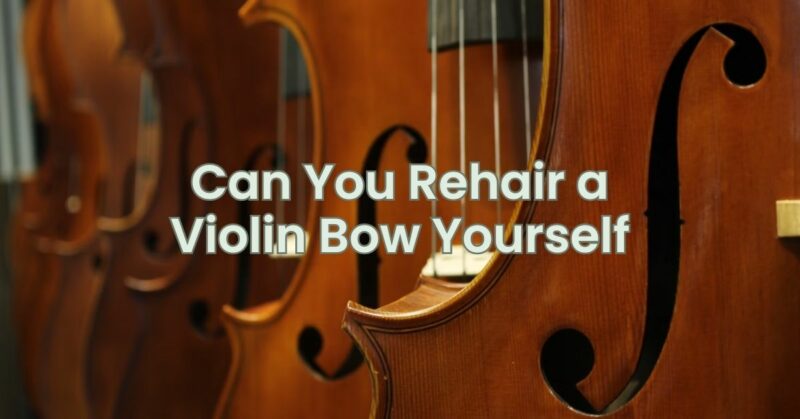Rehairing a violin bow is a delicate process that involves replacing the worn or damaged hair with a fresh bundle of horsehair. While it is possible for experienced musicians to rehair a violin bow themselves, it requires a certain level of skill, knowledge, and specialized tools. In this article, we will explore the considerations and steps involved in rehairing a violin bow to help you decide whether to attempt it yourself or seek professional assistance.
- Experience and Skill: Rehairing a violin bow is a task that requires precision and expertise. It involves handling delicate components, understanding bow mechanics, and ensuring proper tension and alignment. If you have prior experience in rehairing bows or if you are confident in your manual dexterity and attention to detail, you may consider attempting it yourself. However, if you are inexperienced or unsure, seeking professional assistance is recommended to avoid potential damage to the bow.
- Specialized Tools: Rehairing a bow requires a set of specialized tools designed for this specific task. These tools include a rehairing clamp, bow hair comb, scissors or string cutters, glue or adhesive, and a rehairing jig or vise. If you do not have access to these tools or are unfamiliar with their usage, it is advisable to entrust the rehairing process to a professional.
- Understanding Bow Mechanics: Rehairing a bow involves not only replacing the hair but also ensuring proper tension and alignment. A professional bow maker or luthier possesses in-depth knowledge of bow mechanics, including the delicate balance of tension, proper hair alignment, and adequate hair-to-frog ratio. They can make precise adjustments to ensure optimal playability and sound production. Without this understanding, there is a risk of improper tension or alignment, which can affect the bow’s performance and lifespan.
- Potential Risks: Rehairing a violin bow yourself carries some inherent risks. These risks include:
- Damage to the Bow: Mishandling delicate bow components or using improper techniques can lead to unintended damage to the bow, such as scratches, cracks, or misalignment.
- Hair Tension and Alignment Issues: Without proper knowledge and experience, achieving the correct tension and alignment of the bow hair can be challenging. Incorrect tension can affect playability and sound production, while improper alignment can lead to uneven bowing and sound quality.
- Gluing and Securing: Applying the appropriate amount of glue or adhesive and securely attaching the hair to the frog requires precision. Insufficient glue can cause the hair to loosen, while excessive glue can affect the bow’s balance.
- Seeking Professional Assistance: Engaging the services of a professional bow maker or luthier for rehairing a violin bow offers several advantages:
- Expertise and Experience: Professionals have extensive experience and knowledge in bow rehairing, ensuring meticulous attention to detail and high-quality workmanship.
- Specialized Tools and Materials: Professionals possess the necessary tools, materials, and resources to execute a proper rehairing process, resulting in optimal bow performance.
- Guarantee of Quality: Professional rehairing typically comes with a guarantee or warranty, ensuring that any issues arising from the rehairing process can be addressed.
Conclusion: While rehairing a violin bow yourself is possible for experienced individuals with the required tools and expertise, it is a task best left to professionals. The intricate nature of bow rehairing, the potential risks of improper tension or alignment, and the need for specialized tools make professional assistance highly advisable. By entrusting the rehairing process to a skilled bow maker or luthier, you can ensure the longevity and optimal performance of your violin bow, allowing you to focus on creating beautiful music without the worry of potential damage or compromised playability.


